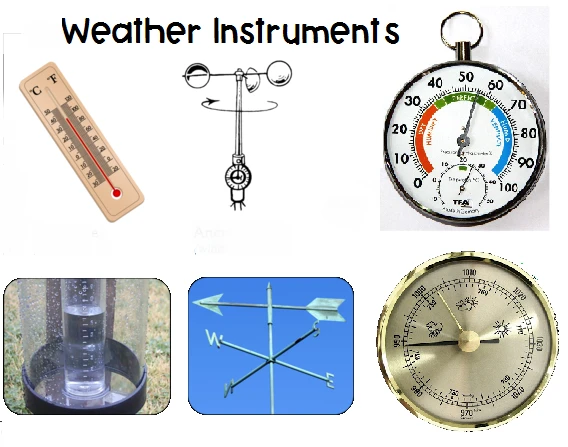
# Weather Instruments: Tools for Measuring Atmospheric Conditions
## Introduction to Weather Instruments
Weather instruments are essential tools used by meteorologists and weather enthusiasts to measure various atmospheric conditions. These devices help us understand and predict weather patterns, which is crucial for agriculture, aviation, marine navigation, and daily life planning.
## Common Types of Weather Instruments
### Thermometers: Measuring Temperature
Thermometers are perhaps the most familiar weather instruments. They measure air temperature using various principles:
– Liquid-in-glass thermometers use expansion of mercury or alcohol
– Digital thermometers use electronic sensors
– Infrared thermometers measure surface temperatures remotely
### Barometers: Tracking Atmospheric Pressure
Barometers measure atmospheric pressure, which is crucial for weather forecasting:
– Mercury barometers use a column of mercury in a glass tube
– Aneroid barometers use a sealed, flexible metal chamber
– Digital barometers provide precise electronic measurements
### Anemometers: Gauging Wind Speed
Anemometers measure wind speed and sometimes direction:
– Cup anemometers use rotating cups
– Vane anemometers combine a propeller and tail
– Ultrasonic anemometers use sound waves for measurement
### Hygrometers: Measuring Humidity
Hygrometers determine the amount of moisture in the air:
– Mechanical hygrometers use materials that expand with moisture
– Psychrometers compare wet-bulb and dry-bulb temperatures
– Electronic hygrometers use capacitive or resistive sensors
### Rain Gauges: Measuring Precipitation
Rain gauges collect and measure liquid precipitation:
– Standard rain gauges use a funnel and measuring cylinder
– Tipping bucket gauges record each small increment of rain
– Weighing gauges measure the weight of collected precipitation
## Advanced Weather Measurement Tools
### Weather Stations
Modern weather stations combine multiple instruments into one unit, often with:
– Wireless data transmission
– Solar power options
– Computer connectivity for data analysis
### Weather Balloons and Radiosondes
These instruments provide upper-atmosphere data:
– Measure temperature, humidity, and pressure at various altitudes
– Transmit data back to ground stations
– Help create atmospheric profiles for forecasting
### Weather Satellites
Orbiting satellites provide comprehensive weather data:
– Monitor cloud patterns over large areas
– Track storm systems globally
– Provide data for computer weather models
## Importance of Weather Instruments
Accurate weather measurements are vital for:
– Severe weather warnings
– Climate change research
– Agricultural planning
– Aviation safety
– Energy production forecasting
## Maintaining Weather Instruments
Proper maintenance ensures accurate readings:
– Regular calibration
– Protection from extreme conditions
– Proper siting away from obstructions
– Routine cleaning and inspection
Weather instruments continue to evolve with technology, providing more precise data that helps us better understand our ever-changing atmosphere.
Keyword: instruments of the weather